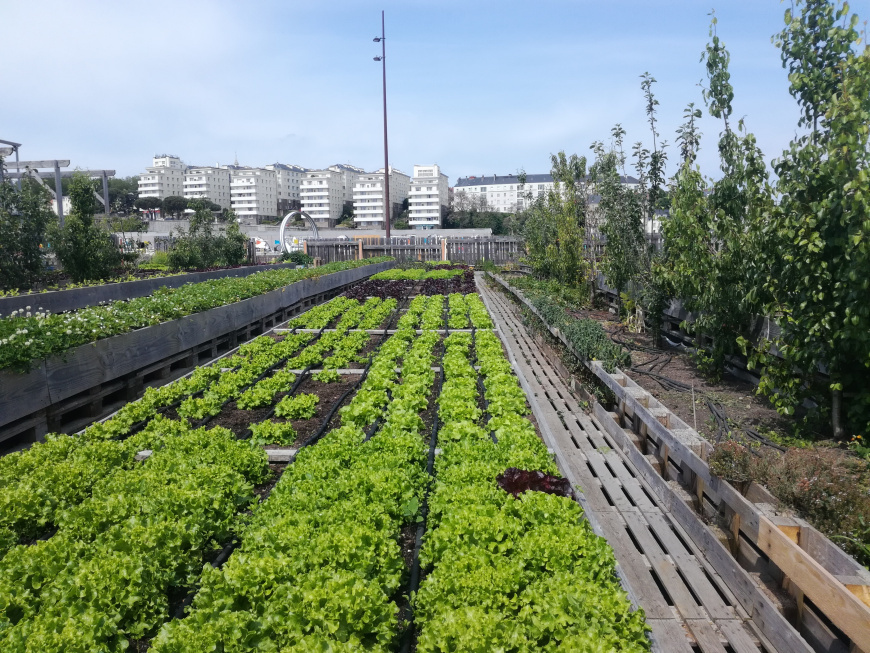What Does City Blooming Do?
What Does City Blooming Do?
Blog Article
Some Known Facts About City Blooming.
Table of ContentsCity Blooming Can Be Fun For EveryoneCity Blooming Things To Know Before You Get ThisThe smart Trick of City Blooming That Nobody is DiscussingThe City Blooming PDFsThe Main Principles Of City Blooming
Fascinated in growing food offer for sale in the City of Chicago? Thinking of starting an area garden? Adjustments to the Chicago Zoning Statute permit farming uses like area yards and metropolitan ranches in numerous parts of the city. Below is a list of regularly asked inquiries pertaining to the rules and regulations that farmers should take into consideration when planning an urban farming project.
The zoning modification does not change any type of various other codes dealing with composting, building permits, purchasing or leasing City possessed residential or commercial property, business licenses or environmental contamination. There are existing codes that regulate these concerns and they remain completely effect and may apply to your project. Community yards are generally possessed or managed by public entities, civic organizations or community-based companies and kept by volunteers.
Urban ranches expand food that is planned to be sold, either on a nonprofit or for-profit basis. Due to their business objective, urban farms need an organization certificate.
Excitement About City Blooming
Composting is allowed but only for plant product that is produced and utilized on site. The amount of garden compost material can not exceed 25 cubic yards at any type of offered time according to the requirements in 7-28-715 of the City's Municipal Code. Yes. Since the dirt at many new garden websites requires changing, garden compost, dirt, timber chips, or various other materials can be acquired to build or improve the growing area - indoor plants.

If a structure authorization is required after that the hoophouse will certainly be thought about an accessory building. You can find out even more concerning the structure authorization demands by calling the Division of Buildings. The 25,000-square-foot size limit is intended to avoid a single community garden from dominating a provided block or detracting from the block's existing residential or industrial character.
The limitation does not use to gardens found in Public Open Room (POS) districts. Can there be more than one community yard that is 25,000 square feet on a single block? Fencing is not required, nevertheless, gardens that have huge parking locations may be needed to mount secure fencing or various other landscape design features.
An Unbiased View of City Blooming
B1 & B2 districts require that all business use tasks be carried out indoors. R areas limit business task. The laws mirror the function and intent of the Zoning Code. Is fencing required for metropolitan ranches? Yes. Fences may be needed, together with landscape design and screening, for sure auto parking areas and exterior job or storage areas depending upon location and the particular activity occurring.
Urban ranches call for structure permits and zoning approvals prior to building and construction (indoor plants). Other types of city review might be required depending on specific frameworks, tasks, size, landscaping, licensing, public heath and stormwater management concerns.
The Department of Service Affairs and Consumer Defense can help identify the certain kind of service license that's required. Off street car park is needed for most business jobs in Chicago. The required number of auto parking rooms is based on the number of employees functioning on website and not the square video of the expanding room.
City Blooming Fundamentals Explained

Yes. A city ranch can offer garden compost material generated on site, nonetheless, the procedure has to abide by the regulations in 7-28-715 of the Chicago Municipal Code. Yes. Aquaponic systems are enabled inside your home on urban farms in numerous zoning districts. A zoning review and structure license is needed in order to mount structures or systems and a business certificate is required as defined above.
Up to 5 hives or colonies of honey may be maintained as an accessory usage. However, beekeepers must sign up with the Illinois Division of Farming. For additional information regarding the suggested zoning amendment you might get in touch with the Department of Real Estate and Economic Advancement, Bureau of Planning and Zoning at 312.744.8563.
, which takes area in rural areas at the side of residential areas.
The Only Guide for City Blooming
, who look for to create social networks started on a common principles of nature and community holism. These networks can develop by means of formal pop over to this web-site institutional support, coming to be incorporated right into neighborhood town planning as a "change community" movement for sustainable city development.
The a lot more straight access to fresh veggie, fruit, and meat items that might be know via metropolitan agriculture can improve food safety and food safety and security while reducing food miles, resulting in reduced greenhouse gas emissions, thus contributing to climate adjustment reduction. Several of the initial evidence of city agriculture originates from Mesopotamia.
Report this page